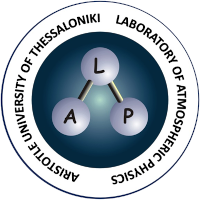Accurate air quality forecasting is essential for environmental management and health protection. However, conventional air quality models often exhibit systematic biases and underpredict pollution events due to uncertainties in emissions, meteorology, and atmospheric processes. Addressing these limitations, this study introduces a hybrid deep learning model that integrates convolutional neural networks (CNNs) and Long Short-Term Memory (LSTM) for ozone forecast bias correction. The model is trained here, using data from ten stations in Texas, enabling it to capture both spatial and temporal patterns in atmospheric behavior. Performance evaluation shows notable improvements, with a Root Mean Square Error (RMSE) reduction ranging from 34.11% to 71.63%. F1 scores for peak detection improved by up to 37.38%, Dynamic Time Warping (DTW) distance decreased by 72.77%, the Index of Agreement rose up to 90.09%, and the R2 improved by up to 188.80%. A comparison of four loss functions—Mean Square Error (MSE), Huber, Asymmetric Mean Squared Error (AMSE), and Quantile Loss—revealed that MSE offered balanced performance, Huber Loss achieved the highest reduction in systematic RMSE, and AMSE performed best in peak detection. Additionally, four deep learning architectures were evaluated: baseline CNN-LSTM, a hybrid model with attention mechanisms, a transformer-based model, and an End-to-End framework. The hybrid attention-based model consistently outperformed others across metrics while maintaining lower computational demands.
Stergiou I., N. Traka, D. Melas, E. Tagaris, S. Papadogiannaki, R. E. Sotiropoulou
Atmosphere 16, no. 6 (2025): 739.,2025


